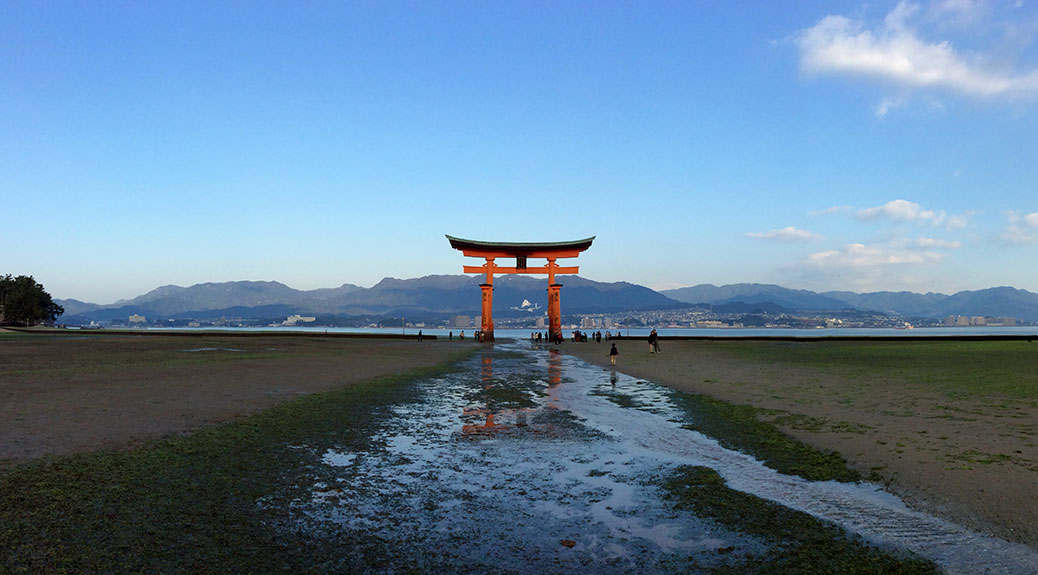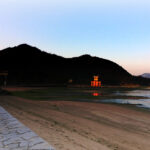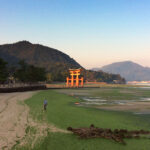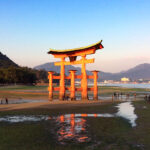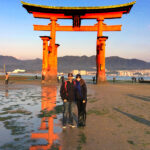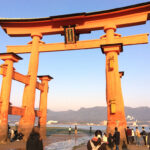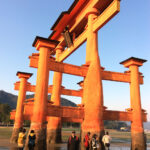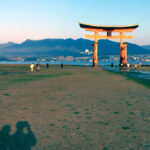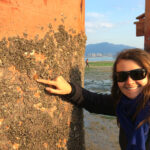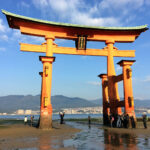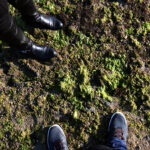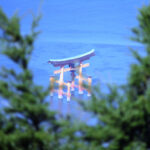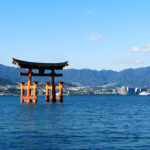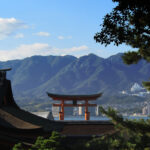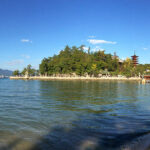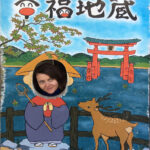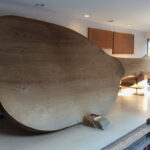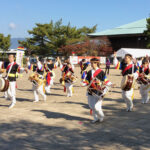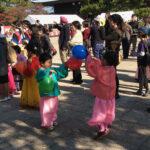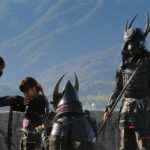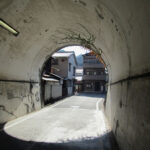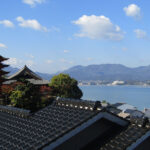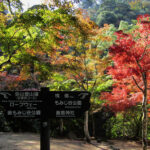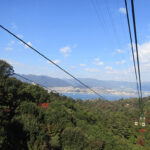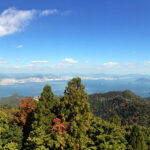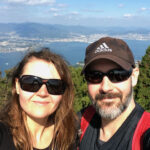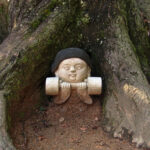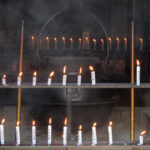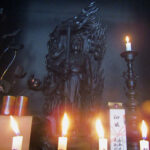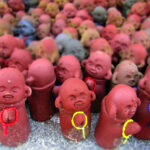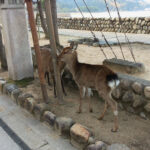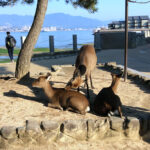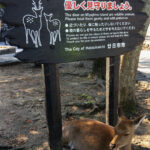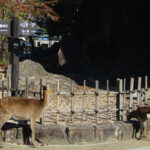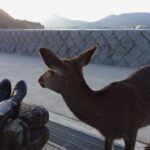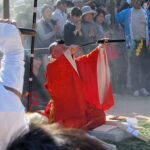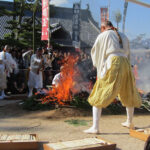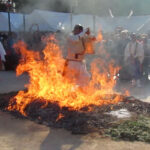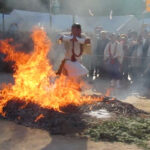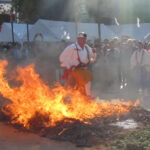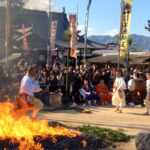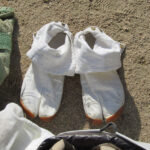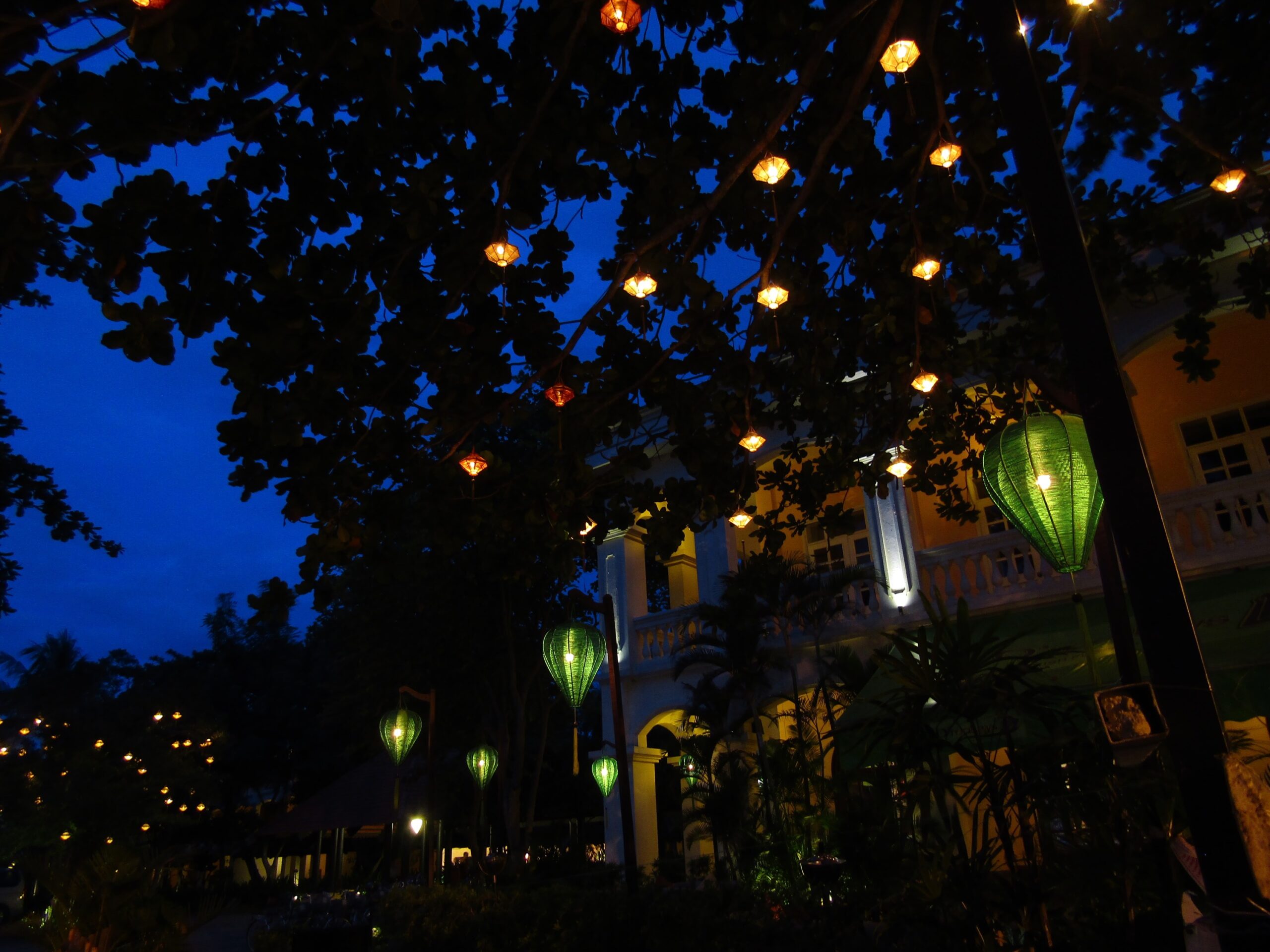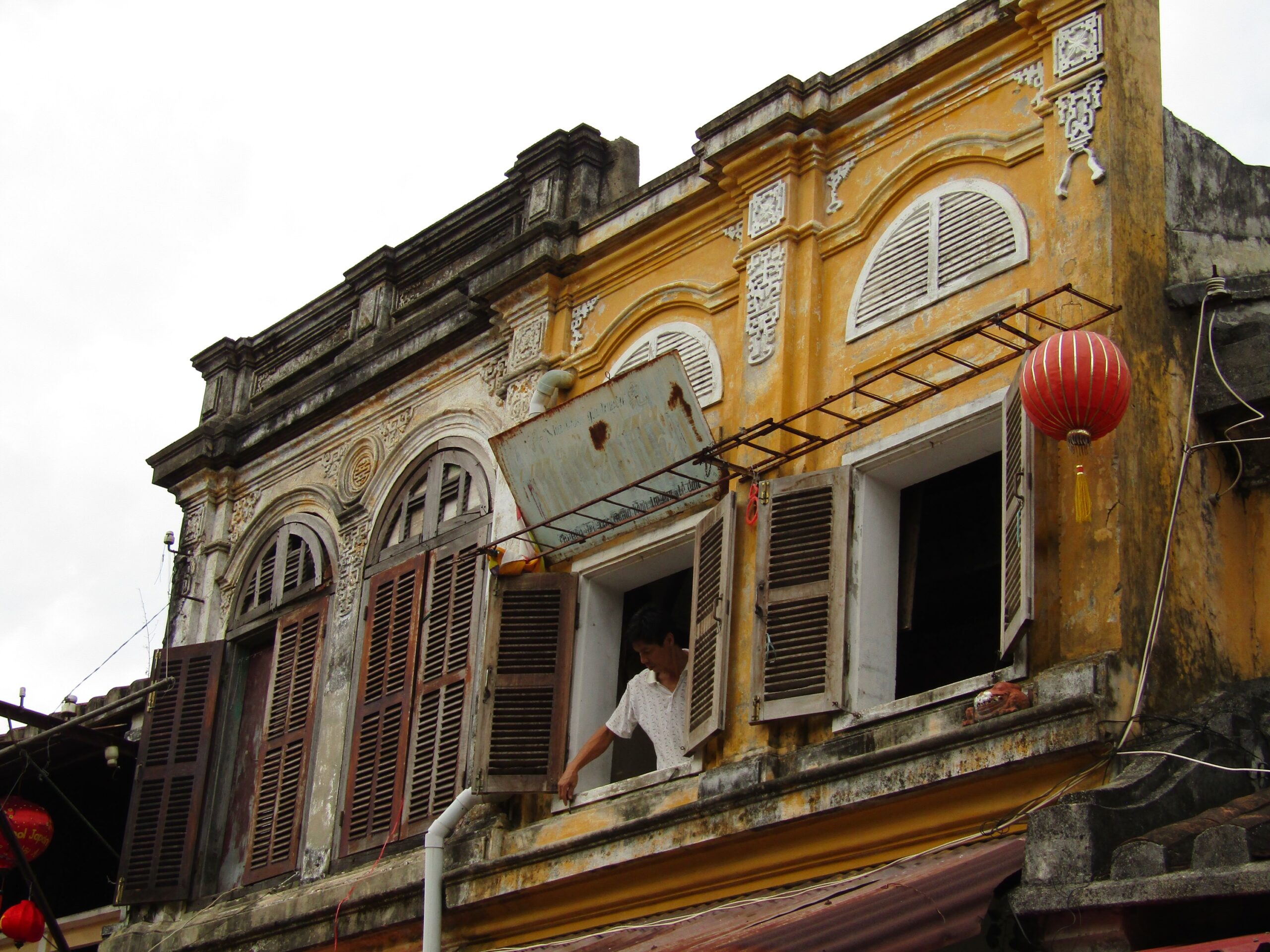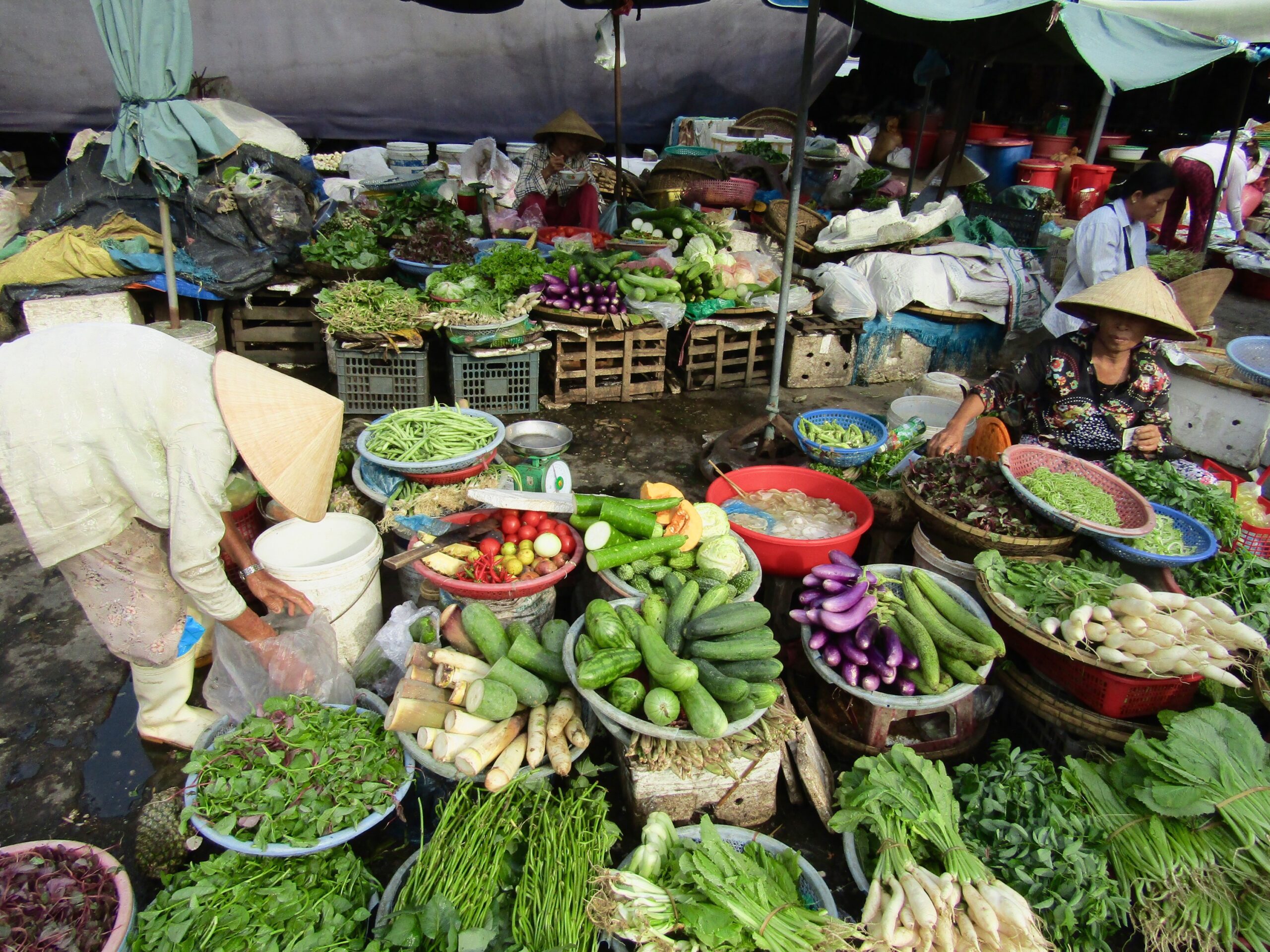We started our day before the day itself got underway, arriving at the Miyajimaguchi Pier ferry terminal just as the sun began to rise over Itsukushima Island. The ferry set sail right on schedule, carrying us through the morning mist hovering atop Hiroshima Bay.

As we approach, the inspiration for the island’s popular nickname—Miyajima (Shrine Island)—emerges through the mist. First, the Great Torii, glowing in orange lacquer, appears just beyond the water’s edge. Then, the sprawling complex of Itsukushima Shrine and the five-tiered pagoda comes into view. It’s picture perfect.

The Great Torii and Itsukushima Shrine are both listed among UNESCO’s World Heritage properties, and for good reason. The Great Torii is in its eighth iteration, this one standing since 1875. Built from 500 year old camphor tree, the 16-ton gate rises nearly 55-feet into the air. Perhaps most impressively, it stands directly atop stones on the seabed instead of being buried into the ground. The weight of the wood and seven tons of fist-sized rocks hand-set in the roof keep the torii planted in place.
Click any photo in the gallery to see a larger version and start a slideshow view
We arrived early enough to be able to spend an hour or so walking around the torii with only a thin crowd joining us. At low tide, you can walk all the way through the gate, the seabed just firm enough from the dried mud and seaweed. We snapped photos from every angle imaginable. We offered to take photos for strangers who offered the same in kind. A quiet and peaceful morning in a tranquil place.
In fact, we arrived so early that none of the shops on Miyajima’s shopping street had opened yet. Around 9 a.m., we finally spotted a cafe propping its doors and stopped in for coffee. Continuing down the street, we tried some of Miyajima’s famous maple leaf cakes and spotted one of the island’s novelties: the world’s largest rice scoop. A Korean dance group set up near the ferry terminal, the rhythmic beat of their drums audible all over the island.
Click any photo in the gallery to see a larger version and start a slideshow view
As the crowd thickened, swarming in every 20 minutes via the ferry, we sought higher ground. The Uguisuhodo Nature Walk trail climbs steadily into the heart of the island, finally meeting up with the Miyajima Ropeway station. The cable cars graze the treetops on their way to the top of Mt. Misen.
Click any photo in the gallery to see a larger version and start a slideshow view
Mt. Misen’s Observatory offers panoramic views of Hiroshima Bay and the surrounding islands. Temples and shrines dating back to the 9th century sit just below the mountain’s summit, full with tales of miracles circulating around Daisho-in Temple’s founding monk, Kobo Daishi.
One of the most popular attractions is Kiezu-no-hi or The Eternal Flame. It is said to have been lit by Daishi himself in 806 AD and continues to burn to this day. Water boiled in a tea kettle over the flame is thought to hold magical healing powers. The flame itself was used as the pilot light for the Peace Flame that burns in Hiroshima’s Peace Memorial Park.
While the torii and the shrines are the main draw, Miyajima might be just as famous for its wild deer. After living with generations of tourists, the deer are mostly docile and don’t really care about the thousands of people walking through their home. However, when feeding time comes, they turn into quite a nuisance, digging into bags or just swiping things out of people’s hands. As we watched the sunset, a deer with a cataract came up and snagged our map of the island out of our bag. He chewed it and swallowed it down, his creepy cloudy-white eye staring at us the whole time.
Click any photo in the gallery to see a larger version and start a slideshow view
Miyajima Firewalking Ceremony
In a moment of travel serendipity, we happened to land on Miyajima on the day of Daigan-ji Temple’s Hiwatari-shiki or Firewalking Ceremony. The ceremony is only held twice a year, once in April and once in November.
Click any photo in the gallery to see a larger version and start a slideshow view
The temple’s monks go through an hour-long ceremony, building a towering bonfire fueled by thousands of wooden stakes—offerings left throughout the year by worshippers. They smooth the coals several times over with long bamboo poles as the flames rise and fall. Purifying salt is thrown over the flames and pine branches laid at either end of the inferno. There’s chanting, a conch-shell horn and a lot of theatrics.
As they near the end, one of the monks begins an intricate final dedication, writing Japanese characters in the air with his arm. Suddenly, as the fire returns to its peak, the monks run through one by one. With the drawn out ceremony, the haste of the climax is almost shocking.
Once the flames die down and only the hot coal remains, visitors are invited to partake in the ceremony. The line wrapped around the temple as tourists passed over the coals one by one.

